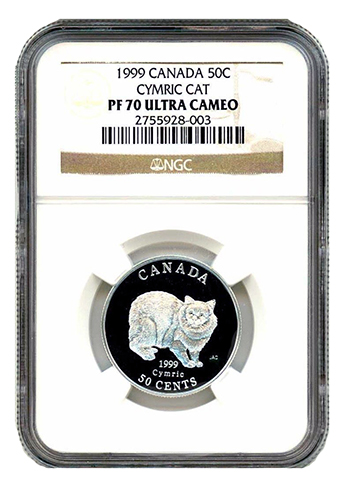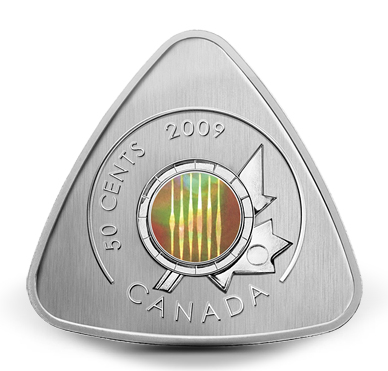
By Ron Drzewucki – Modern Coin Wholesale …..
After my previous history of the Royal Canadian Mint, I wanted to run through an impromptu (yet hopefully stimulating) sampling of Royal Canadian Mint products since the release of the first Canadian Silver Maple Leafs in 1988. Because the Mint has been at the forefront of numismatic collectible production (including circulating commemoratives and Not-Intended-for-Circulation coinage), only a long series of articles could do its output justice. I’m not proposing to do that, though several coin series are of particular interest and I may give each one special treatment some day.
So if you’ve ever been interested in modern Canadian coinage but didn’t know where to start or were too intimidated, this blog is for you.
1990 – 1999: The Aviation Collection
The Aviation Collection is a two-series set of 20 coins released biannually over 10 years and culminating in 1999, the 90th anniversary of flight in Canada. Why the 90th anniversary and not the 100th, you ask? Beats me. But the collection is notable for a couple of reasons.
The 1990s was when the Royal Canadian Mint really began to up the innovation game. The coins of the Aviation Collection were the first Canadian coins to feature 24-karat, gold-plated cameo portraits.
And I’ve got a sweet spot in my heart for coins that dare to portray “modern” technology and other contrivances (see my article on the 1928 Kweichow “Auto Dollar”, for example) on such a traditionally conservative medium. These coins feature several famous Canadian aircraft, and are probably singlehandedly responsible for much of the world’s representation of airplanes on coins.
Interestingly, the de Havilland Beaver–portrayed on a 1991 entry in the Aviation Collection–also shows up on a 2008 1/25 oz. gold Proof coin.
1992: 350th Anniversary of the City of Montreal
Okay, I can appreciate a 350th anniversary celebration. When else do you get to say “semiseptcentennial” with a straight face?
In 1992, the Royal Canadian Mint released the latest in a fairly long line of $100 gold commemoratives – the 1/4 oz., 0.583 fine 350th Anniversary of the City of Montreal coin.
It features a better-than-average design, but to be honest I could’ve picked any of the $100 face value gold coins. My point here is to show how the Royal Canadian Mint produces coins in far more denominations than the United States. Above the loonie and toonie (and all smaller denominations), Canada releases coins with face values of $3, $4, $5, $8, $10, $15, $20, $30, $50, $75, $100, $150, $175, $200, $250, $300, $350 and $500.
They may not be intended for circulation but still, that… is a lot.
They even released a $2,500 gold piece in 2013: a one-kilogram monster celebrating the semiquincentennial (look it up) of the end of the Seven Years’ War. Look that up, also.
 1995 – 2000: The “Discovering Nature” Series
1995 – 2000: The “Discovering Nature” Series
Canada loves its wildlife and natural beauty. If you’ve ever been to the Great White North, then you understand why.
As such, wildlife and nature is a dominant theme in Canadian numismatics, a theme which continues to this very day. The “Discovering Nature” series really kicked this tendency into high gear in the 1990s.
Though I wonder if “series” isn’t something of a misnomer. It’s more like a collection of six annual four-coin series, each one with a different unifying motif. In 1995, it was “Birds of Canada”. In 1996, it was “Little Wild Ones” (baby animals). In 1997, “Canada’s Best Friends” (hunting dogs).
1998 saw the release of the “Ocean Giants” series. “Cats of Canada” (wild cats, that is) came out in 1999. 2000’s contribution to the series was the “Birds of Prey” set.
“Discovering Nature” was innovative in another way: they were the first 50-cent collectors’ coins ever issued by the Royal Canadian Mint. Since it took so long for the Mint to produce commemorative half dollars, this is a rare instance in the modern era when they lagged behind the United States numismatically.
2007-2010: Various NHL-Themed Coins
Besides its legendary natural beauty (and legendary timbits), Canada loves one thing above all else (and thank goodness I’m not talking about Germany, because then I’d have to say David Hasselhoff). And that thing is hockey. But if you think about it, hockey and Canada’s natural resources (and timbits, named for NHL Hall-of-Famer and restaurateur Tim Horton) go hand in hand. Where else did hockey originate than on the frozen ponds and lakes of Canada in Winter?
So of course hockey and the National Hockey League (NHL) appear on Canadian coins as well. Various NHL-related coins (in 25 cents, 50 cents, $1, $2 and $20 denominations) have been released in the last decade.
2009: Six-String Nation Guitar Triangular Hologram Coin
 I had to talk about the vast number of novelty coins the Royal Canadian Mint has produced over the last 15 years, and perhaps no other coin embodies this trend as well as the 2009 Six String Nation coin.
I had to talk about the vast number of novelty coins the Royal Canadian Mint has produced over the last 15 years, and perhaps no other coin embodies this trend as well as the 2009 Six String Nation coin.
“Six String Nation” is the name of an acoustic guitar created by Jowi Taylor to counter what he saw as the simplistic English-French dichotomy often lazily presented by the media and government as central to the Canadian identity. Made from historic and culturally-important buildings and objects from every territory and province in Canada, Six String Nation is a true composite of what it means to be Canadian. It was introduced to the world in 2006, and has been played by Canadian musicians and performers ever since.
In 2009, the Royal Canadian Mint decided to honor the guitar with a very special novelty coin.
The coin is in the shape of a guitar pick (a triangle with rounded edges) and also contains a hologram featuring guitar strings and located where the soundhole would be. Clever.
Besides irregular shapes (which the Mint has done forever, if you include circulation pieces like the iconic 12-sided five-cent nickel), Canada has also produced other coins with holograms, swarovski crystals, enamel, partial or complete colorization, and even a few popular glow-in-the-dark coins (the 2012 Glow-in-the-dark Pachyrhinosaurus dinosaur quarter, for example).
It brings up questions of what belongs on a coin, but the RCM has done fairly well for itself with such products.
2011-Now: $20 for $20 Silver Coin Series
In 2011, the Canadian Mint began what’s proven to be a successful new line of collectibles with its “20 for 20” program. Exploring a wide range of themes–obviously nature is strongly represented but including such cultural treasures as Superman (co-creator Joe Shuster was Canadian)–the “20 for 20” series is too variegated to start talking about at the end of my blog post (cop out!). Suffice it to say, it’s smart marketing, and the U.S. Mint would be wise to implement something similar.
There are also “$50 for $50” and “$100 for $100” silver coin programs, which began later.
Conclusion
While I was looking through my inventory of Canadian coinage in preparation for this post, it slowly dawned on me:
There’s something exotic about Canadian coins.
Does anyone else feel that way?
Maybe it’s the way one occasionally pops up in pocket change, and for half a second your brain doesn’t know what it’s looking at. Maybe it’s the decidedly non-individualistic fact that the different denominations all have the same obverse – a portrait of Queen Elizabeth II, which is also something “foreign” to the American experience. Maybe it’s the odd shapes of some of the coinage. I don’t know for certain.
But I do know that Canada produces some of the technically-finest coins on the market, and if modern coins are your thing, you can’t get much more modern than the Royal Canadian Mint.
-Ron




